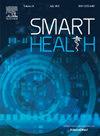Novel EEG feature selection based on hellinger distance for epileptic seizure detection
Q2 Health Professions
引用次数: 0
Abstract
This study introduces a novel feature selection method based on Hellinger distance and particle swarm optimization (PSO) for reducing the dimensionality of features in electroencephalogram (EEG) signals and improving epileptic seizure detection accuracy. In the first phase, the Hellinger distance is used as a filter to remove redundant and irrelevant features by calculating the similarity between blocks within the feature, thus reducing the search space for the subsequent second phase. In the second phase, PSO searches the reduced feature space to select the best subset. Recognizing that both classification accuracy and dimensionality play crucial roles in the performance of feature subsets, PSO searches various sets of features (ranging from 410 to 2867 in EEG signals) derived from the first stage using Hellinger distance, rather than searching through the full set of 4047 features, to select the optimal subset. The proposed Hellinger-PSO approach demonstrates significant improvements in classification accuracy across multiple models. Specifically, Logistic Regression (LR) improved from 91% to 95% (4% improvement), Decision Tree (DT) from 95% to 97% (2% improvement), Naive Bayes (NB) from 94% to 99% (5% improvement), and Random Forest (RF) from 96% to 98% (2% improvement) on the Bonn dataset. Additionally, the method reduces dimensionality while maintaining high classification performance. The results validate the efficacy of the Hellinger-PSO technique, which enhances both the accuracy and efficiency of epileptic seizure detection. This approach has the potential to improve diagnostic accuracy in medical settings, aiding in better patient care and more effective clinical decision-making.
基于hellinger距离的脑电图特征选择在癫痫发作检测中的应用
提出了一种基于海灵格距离和粒子群优化(PSO)的特征选择方法,以降低脑电图(EEG)信号中特征的维数,提高癫痫发作检测的准确率。在第一阶段,使用Hellinger距离作为过滤器,通过计算特征内块之间的相似度来去除冗余和不相关的特征,从而减少后续第二阶段的搜索空间。第二阶段,粒子群算法搜索约简后的特征空间,选择最优子集。认识到分类精度和维数对特征子集的性能起着至关重要的作用,PSO使用海灵格距离搜索从第一阶段得到的各种特征集(EEG信号中的410到2867),而不是搜索4047个特征的全部集合,以选择最优子集。提出的Hellinger-PSO方法在跨多个模型的分类精度方面有显著提高。具体来说,波恩数据集上的逻辑回归(LR)从91%提高到95%(提高4%),决策树(DT)从95%提高到97%(提高2%),朴素贝叶斯(NB)从94%提高到99%(提高5%),随机森林(RF)从96%提高到98%(提高2%)。此外,该方法在保持高分类性能的同时降低了维数。实验结果验证了Hellinger-PSO技术的有效性,提高了癫痫发作检测的准确性和效率。这种方法有可能提高医疗环境中的诊断准确性,帮助更好的患者护理和更有效的临床决策。
本文章由计算机程序翻译,如有差异,请以英文原文为准。
求助全文
约1分钟内获得全文
求助全文

 求助内容:
求助内容: 应助结果提醒方式:
应助结果提醒方式:


